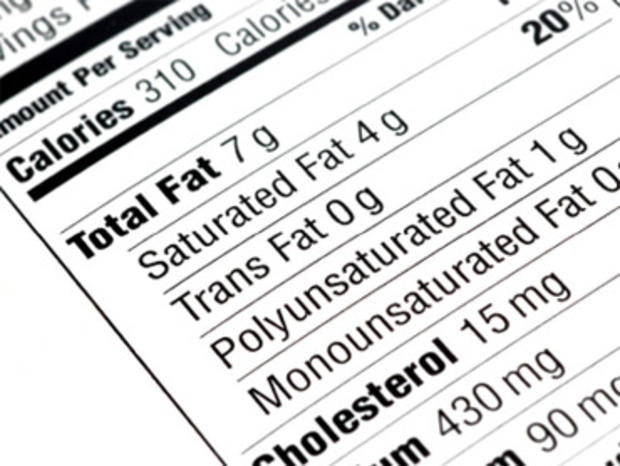Nutrition labels need Energy Star-like ratings, panel urges
(CBS/AP) Nutrition labels aren't doing enough to let consumers know what's healthy.
So says the Institute of Medicine, which on Thursday issued a report urging the FDA to adopt a labelling system similar to the "Energy Star" system that helps consumers choose washing machines and other appliances.
"American shoppers are busy shoppers," said Ellen Wartella, a Northwestern University psychology professor who chaired the Institute committee that studied food labels at the government's request. "We want a really simple system that says if you have three marks, that product is healthier than one with two marks."
Just like the Energy Star tag, the report says a rating symbol on the front of every food product could help shoppers know at a glance which foods are healthiest. Make no mistake - this doesn't mean the end of in-depth "Nutrition Facts" panels on packaging. But few shoppers stop to read the panels once they're at a grocery aisle, the Institute said.
That's why it's time to put right up front the most important health information, according to the Institute: how many calories per serving - and just how big that serving is - along with stars or some other symbol that quickly shows how the food rates for fat, sodium and added sugar.
How to get Americans to eat healthier is a huge problem, with skyrocketing rates for obesity and diet-related diseases. The FDA, which has been working to make the food-labeling system more user-friendly, and called the Institute's report thoughtful - but wouldn't say if it would adopt the proposed rating system.
"FDA agrees consumers can benefit from a front-of-pack labeling system that conveys nutrition information in a manner that is simple and consistent with the Nutrition Facts panel," said spokeswoman Siobhan DeLancey.
Even with FDA support, the recommendations likely face an uphill battle from the grocery industry, which is pushing its own "Facts Up Front" rating system. That system would summarize nutritional information on the front of products, according to the industry site, Progressive Grocer. Grocery manufacturers don't like the idea of ranking one food healthier than a competitor's.
"We believe the most effective programs are those that trust consumers and not ones that tell consumers what they should and should not eat," said Scott Faber, a lobbyist for the Grocery Manufacturers Association.
Michael F. Jacobson, executive director for the Center for Science in the Public Interest, saw that coming a mile away.
"The Institute of Medicine's proposal is eminently sensible--and will probably be roundly condemned by food manufacturers," Jacobsen said in a written statement emailed to CBS News. "The IOM's proposal is far preferable to the voluntary "Facts Up Front" labeling program. The industry's complex scheme requires consumers to consider the amounts of calories and four to six nutrients, without any numerical score or useful symbols to convey a food's nutritional value."
Would a visual rating system help you eat healthier? Tell us what you think.

